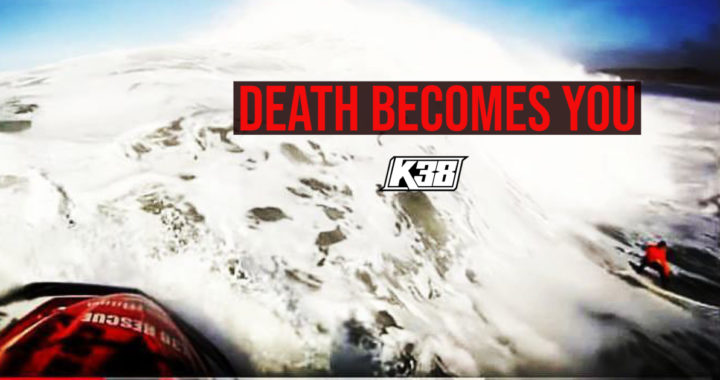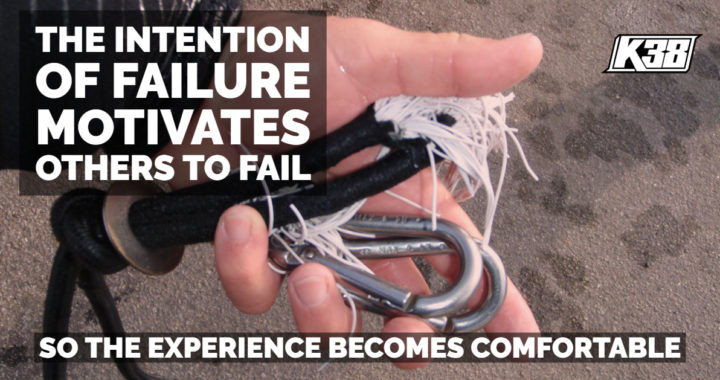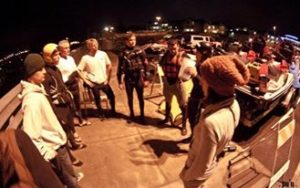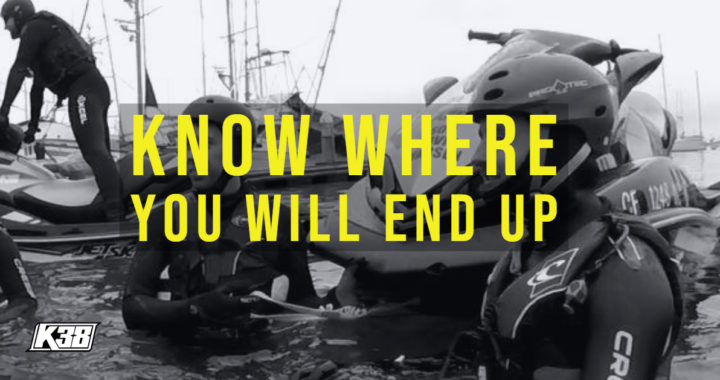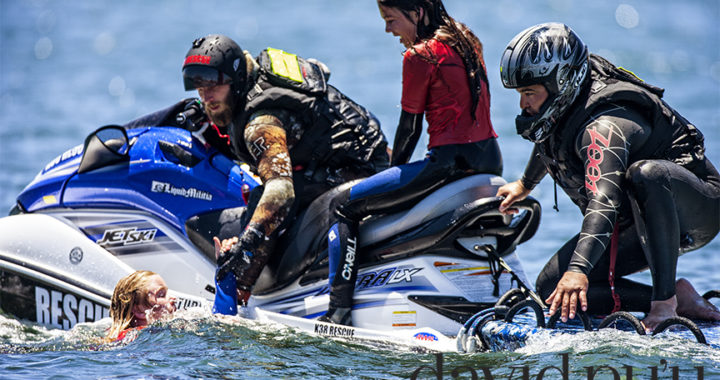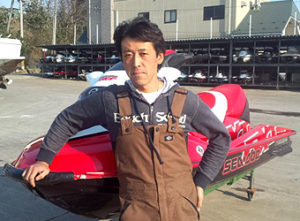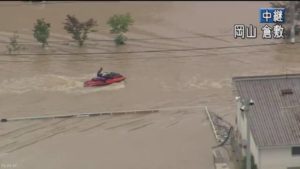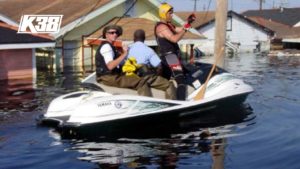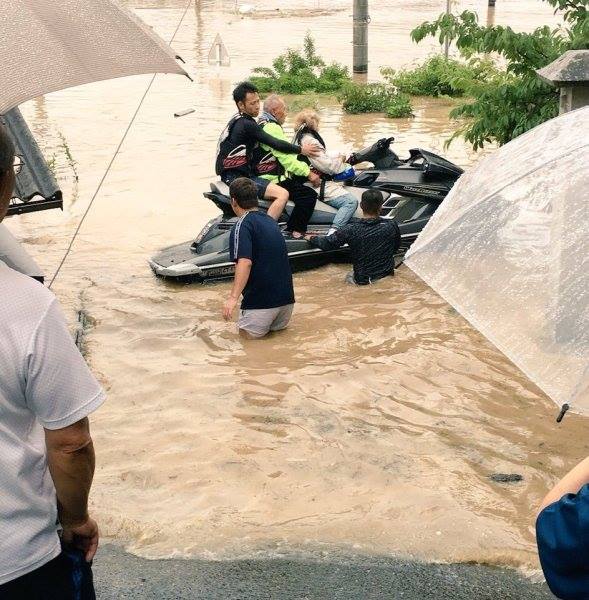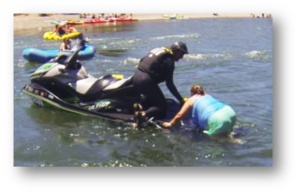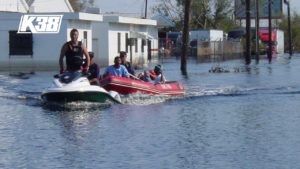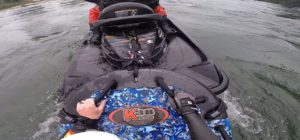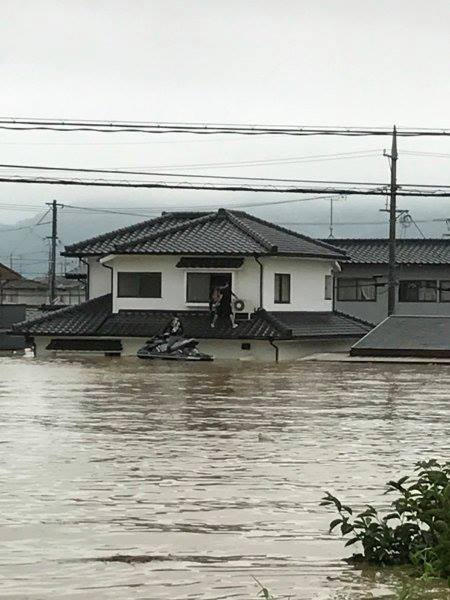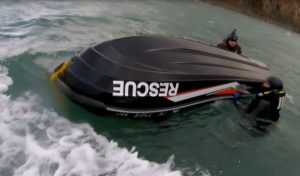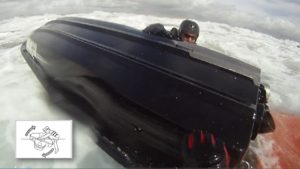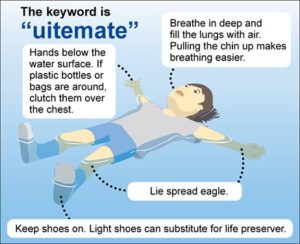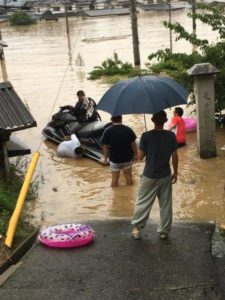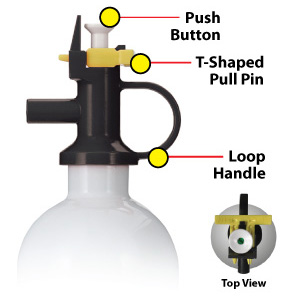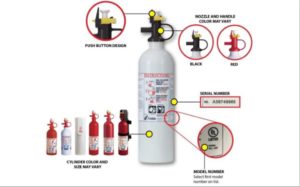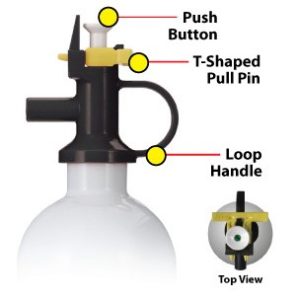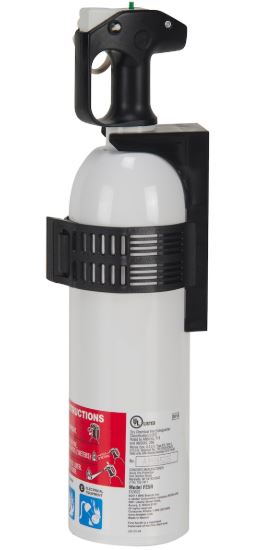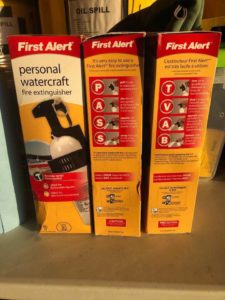WHO WANTS TO BE THE FIRST PERSON TO KILL A SURFER WITH THEIR PERSONAL WATER CRAFT?
It’s going to be someone, so how about you? How well prepared are you to prevent killing someone’s husband, wife, mother, father, brother or perhaps your best friend! Let’s call out the problems and the individuals and deal straight up with these recurring altercations and embarrassment caused to our Personal Water Craft community.
Death can be accidental. We say that accidents can be prevented right? At what point to we decide to apply the prevention, before or after death?
I read another deserving complaint from a surfing vs. PWC incident recently which is the inspiration of this story, one of a long line of them from around the world honestly.
Our Personal Water Craft (PWC) community needs to take responsibility for these actions and stand up against the liabilities. Not everyone deserves these negative labels and we will not tolerate disrespectful or ignorant operators because of that projected negativity on those of us who do the right thing.
Read this story here: Gold Coast Jet Skier Problems
And this one: Jet Skiers Not Being Responsible
And this: Jet Ski Operations Bring Safety Concerns
This: Safe Speed Around Others
Let’s help them so they can aim to higher boating capability and be safe while doing it, we all deserve that! It’s better than slinging spite, let’s get to admissions and corrections and hold one another accountable.
The internet does not lie regarding the complaints stacking up in the surfing world. Give the paddle surfers their voice and listen to what they are expressing. Surfing has always had frictional problems, but now it has boat problems. Once SUP problems, add foil problems, access for personal pursuit is varied:
1. Paddle
2. Power
Review this now-Determination of the following:
A. Reckless or Negligent Operation of a Vessel
B. Reasonable and Prudent Operations
Determining operations fault, operating at a rate of speed and in proximity to another vessel so that either operator is required to swerve at the last minute to avoid collision. Make sure you thoroughly research the laws surrounding this in your State or country of origin.
How familiar are you with emergency and accident procedures?
If you say and hold a certificate for boating you should know these and be able to define them. If you cannot do that your training and instruction failed you, you need to stop your program now and refresh. In fact, constantly update!
Do you have a radio or EPIRB/PLB and understand the following:
1. Mayday Mayday Mayday
2. Pan Pan Pan
3. International aircraft signal
4. Channels 16, 21, 22, 23
5. Accident Reporting
6. Visual Distress Signals
7. Monitor weather channel
8. Registration, education, insurance and license requirements
9. Uniform State Waterway Marking System
10. Aids to Navigation
11. Navigation Signals
12. Fog Signals
13. Operational law
If any of these are unknown to you the solution is simple. Start learning, seek training, and don't stop.
Power is the ultimate risk of 'gross liability'. It begins with the individual at the helm, and is put into motion by decisions they make.
If you have a paddle craft or swimmer in the USA you also have a 5 m.p.h. zone, with the exception of public safety agencies responding to a call for lifesaving. Most surf zones are off limits for power boats to be in those areas, permission revoked due to the obvious safety threat.
For instance in California many cities have rules such as this: No person may operate a vessel at a speed greater than five (5) miles per hour within 100 feet of a swimmer or surfer or within 200 feet of a beach frequented by swimmers. Within 100 feet of shore, or within 100 feet of another vessel.
Lineups are crowded, there is never a justification for a PWC in the lineup unless it’s under permit from a special event or far away from others, in legal permitted operation zones if they exist.
It’s not just about you, paddlers are more vulnerable and you are a direct threat.
Yeah, of course it’s cool! Even though you can get more waves faster via a PWC pony ride, have more fun surfing with your friend, and by step offs - saving energy and increasing barrel potential, don’t do it around others.
NOBODY HAS THESE DISCUSSIONS
Until an attorney is present. How about if you kill yourself, what will that mean to your family? What do you think the final seconds of your life will be worth as you slip away?
Was it worth it or could you have stopped the flow? This is not a noble ending, you are worth so much more.
Surely you are valuable and have things you want to do, so make your behaviors equal to your value.
Your absence will be horrible, a horrific tragedy for those you leave behind. Let that sink in. You don’t want to go to prison for accidental homicide.
Take inventory and start to look at your deepest truths of vessel operational accountability.
This is not abstract, it’s a way of being and we all need strong mentors for the nature of our soul.
You need to mediate your tragedy or your success.
The Kaleidoscope of athletic pursuit is not reliant on the action, but the preparation of its success.
That requirement is one of a burden of tremendous responsibility. It’s quadrupled when you are at the helm of a motorized vehicle. It’s either used for the pursuit of excellence or it’s a 1,000 lb. bomb waiting to blow.
Personal Water Craft (PWC) are incredible power boats. They are modern in scope and have given us greater freedom and the ability to pursue dreams, careers, competitions, film and television, catch great fish, enjoy family gatherings, friendly club excursions, commune with nature, explore, experience incredible adventures and save lives, thousands of lives.
BENNIE AND THE JETS
That is the benefit of owning or operating a PWC; the glory of freedom.
The problem with Personal Water Craft is people. It begins with the registered owner(s) who are legally responsible by law for everything that happens with that craft and whom they bring on-board or loan their boat to operate.
The rebate check can quickly become the registered owners friends and family members the owner allows to operate. There is nothing wrong with a PWC. The risk and danger is the decisions a human puts into motion while operating a PWC.
There are too many poor examples not to have noticed this by the year 2019. Personal Water Craft came into the market place as we know them back in 1974. We have plenty of history to track, yet each generation starts over at the beginning, losing the insights of the creators of this sport. This is a dangerous pattern.
They have progressed and become popular modern power boats to own. They provide us with opportunity. They save money on storage due to their size, they are easy to transport, not difficult to maintain if one actually understands what that responsibility means.
The internet offers you the quickest way to intelligent operations. There are literally no more excuses available for anyone to hide behind.
Cool Beans! Step Off Surfing/bodyboarding, Tow surfing, Tow Foiling, Caddy Rides, new ways to get more waves or to use as a film platform for personal use or professional captures.
The best seamanship skills I have witnessed in recent years comes from the PWC fishing community. They have invested a significant amount of money into their rigs. They have communication devices, they monitor the weather, they study nautical charts, they know the seasons. They take risks but they have fairly effective measures for their outings in place regarding safety.
Recreational tours are becoming more popular. Many of these people think they are prepared but they need to ramp it up two levels. They are using fuel systems that are portable and really need to get an inspection and get those boats signed off by a mechanic. Risk of explosion and fuel spills are imminent especially if they capsize or lose their craft underway.
Falling overboard can cause injury, and towing from long distances is a study of itself.
If used for the purpose of lifesaving, proper and current qualification training and scrutiny of Coxswain candidates and equipment is required if not necessary. Reviews and critical assessments are annual, accidents are reviewed and remedial action is applied swiftly.
It’s a true vessel of our times; it’s modern, fast, and aggressive and compliments our competitive nature. But that needs to be harnessed and not unleashed recklessly.
If this describes you, where do you begin?
You back up. Pick your poison, there is risky solutions and both can be horrible or equal depending upon the challenging situation you entertain. You can choose the one you are willing to suffer with, engage your dopamine, be willing to know what you are doing, who you are and what you are willing to risk.
Go back to your foundation. Review your basic boating course you had to take and assess your responsible behaviors.
Once you master that you move forward to listing all the potential harm you can cause. Such as wear your lifejacket, use your engine cut off switch properly, the basics.
Don’t be an incompetent operator that is easy fodder for the twitter mobs. And if you do, you deserve it.
You decide, you can become tyrannical in your pursuits and restrict your possibilities and you can damage community. When you cut corners, you increase the associated costs. You don’t want to lose that chance and squander the opportunity to be great because you may not get it back again.
BOATING IS EXPENSIVE
If you are not prepared to be economically realistic with Personal Water Craft ownership don’t get one. Resist, avoid, walk away and don’t succumb to mediocrity.
Pay up properly and understand the investment ratio to hours of use. The stakes are too high. What are some of the items you need?
1. Payment of the craft and registration fees
2. Boaters insurance, life insurance (make your will while you are at it)
3. Hourly maintenance schedule and inspection log book
4. Boating Education & recurring education
5. Ensure anyone who comes on board your PWC has training to protect your reputation, livlihood and insurance
6. Spare parts, mechanic fees, diagnostic checks
7. Trailer-maintenance, tires, axles, electrical, tie downs, registration fees (tow vehicle/hitch)
8. Personal Protective Equipment: Lifejacket(s), wetsuit, booties, gloves, eye protection
9. Communication systems: Radio, Whistle, GPS, trackers
10. Government required onboard safety equipment properly packed, waterproofed and stowed
11. Fuel and fluids (silicone, marine grease, wash down, cleaning agents)
12. Towable Aquaplane Devices (TAD) accessories (foils, rescue boards, towlines, inflatables)
Start with death and go backwards. Make admissions, visualize accidents you have read about and place your name in the storyline:
‘Jet Skier dies, body missing, wasn’t wearing a lifejacket, family grieves, search continues’
Here is what a lot of people do to evade responsibility, until it’s too late:
• I can kill somebody and it will be an accident (but not really)
• I can kill myself and my family and friends will deal with the ramifications of my choices
• I can destroy the Personal Water Craft and try to claim insurance on it when I was in a ‘no-go’ zone, so I will lie about
the damages and location
• I can kill one of my friends or somebody I didn’t know, maybe more than one person, but I will meet their family in court
after my arrest and impound of my Personal Water Craft and face my family.
• Didn’t file a float plan, sunk my PWC, expect a ride from rescue services, didn’t learn my lesson
• I can seriously injure myself or others so that I cannot go to work and pay my bills. I may need therapy or rehabilitation
and I don’t have the right medical policy to cover that. Maybe a friend will set up a GoFundMe and slightly lie about why
I need the money, not how I created the situation and I knew better.
• Keep going, you can imagine all the potential items that can go wrong by your own volition.
COXSWAIN-OWNER PERSONAL WATER CRAFT SURF ZONE LIABILITY
This is something you need to attend to and it is worthwhile for not just you but everyone in the lineup. Don’t be blind in your selective situations.
Remember what is lying behind everything you select, every action, every turn and decision? Don’t bring on suffering because it is a tremendous burden and nobody deserves that potential risk.
Many PWC operators and their passengers are not boaters. They are thrill seeking reckless riders.
They ride above safe conditions, they place their passengers in harms way. They do not know how to right a capsized PWC, let alone understand that they are the ones capsizing it in the first place. They rarely carry proper marine communication devices. Very few are savvy enough to file a float plan.
They do not know what a buddy system is and if they do, selfishly ride off into the horizon ignoring their buddy. They rarely have functional emergency equipment onboard. They don't know how to navigate offshore, they will not spend money for anything that may effect their very life but want more horsepower.
This list is too long to mention. All you have to do is a google search on PWC accidents and the list of horrors is pages long. All preventable.
Surfers are not boaters. Not when they are surfing. That is a different activity.
Most surfers who use a Personal Water Craft are incompetent when it comes to seamanship skills, they get lucky a lot. then it happens, somebody gets hurt. Commonly they sensationalize the recovery results of their mishap because it suddenly got real and they did not prepare for 'real'.
They become instant heroes of the surf in rescue mode. They will call themselves rescuers at this point. Because they have proof on video they made it! Next you will see them running to take a CPR or First Aid Course.
Shouldn't that have happened long before they got into the water or when they first bought their PWC? They almost prepare backwards. Most of it is again poor mentorship leading them in the wrong directions first.
CPR and First Aid are common everyday needs that even businesses entertain for their employees. For Surfers its as if the big red light went off and oh we have CPR, okay.... good. Finally!
How long have you been surfing without CRP skills or basic first aid? If a surfer was a Junior Lifeguard they would have had this training as a child, or a seasonal lifeguard. More training discipline applies for a full time lifeguard. Never let the liability mindset slip away because of the activity. Hold onto it for dear life.
How long does it take for Lifeguards and surfers to catch up to the boating community and step outside of that waterman mentality and make friends with boating safety instructors who can get them where they need to go in competent training course based on science and evidence?
Note: Waterman as a term is a seasoned boater on the east coast and southern areas of the USA, so do not be confused with a surfer who calls themselves a waterman!
Merriam Dictionary: waterman: [noun] one who works or lives on the water: such as. a man who makes his living from the water (as by fishing). a person skill in rowing or boating, a boatman who plies for hire usually on inland waters or harbors.
Research these terms:
1. Boatsman
2. Boatsmanship
3. Boatswain
4. Watermanship
5. Coxswain
6. Helmsman
7. Skipper
8. Crew
If they had these boating skills the majority disregard using them on a PWC. They claim training but when challenged their training qualification is worthless. If I were to skill assess a surfer on a Personal Water Craft they would determine their current state of operations and realize their shortcomings in one hour of training.
Evidence does not lie. The great news, the increase would be incredible and their performance increase measurable!
So what is the point of wasting time? Make it 'right as rain'.
Those who forsake their boating basics easily become reckless and negligent in their operations incremental over time, sometimes due to peer pressure and have a finite disregard for the safety of others. It becomes a a slow seep and a lack of seamanship skills on a slippery slope of decline.
The evidence is based on videos they share. Their Towable Aquaplane Devices (TAD) are not secured safely, they do not use the engine cut off switch, they do not maintain the craft properly and have never taken a mechanic maintenance course. Many I question have not read their owner's manual and do not own a shop manual.
They lack torque specifications, properly tooling and their pumps are generally blown but they do not know it. Evidence is a tricky business, its hard to decline the science of fact. I know firsthand, that is how I learned, from those failures and I made a commitment towards being a competent boater.
I invite everyone to do the same. We can apply this same argument to recreational Personal Water Craft users and owners and many public safety agencies.
It’s because these Operators have had poor mentors or they have imitated poorly themselves, and they fail to question repetitive results that are not favorable. The goal is to become an Able Seaman!
Or they simply disregard their training and boating safety because their ego is unbalanced on a dangerous precipice. Ego we need, yes, but not when it comes to learning, save that for the activity. Good mentors would call them out and set them straight ASAP!
A few get it and are respectful and we don’t hear about them because they do not draw attention to their mishaps. Their routine is secure and organized.
The noise usually comes at the expensive of a catastrophic failure. It’s not cool to gawk at a mishap online. Nobody should take joy in knowing somebody experienced a catastrophic injury or accident. We should care and encourage them to get additional training or knowledge. We should not celebrate their failures.
No they are not heroes for surviving a mishap. The scope of sensationalism should not penalize a gifted athlete for anything less than surfing the best way they can attend or their Operator executing a seamless recovery. They don’t have to be in the surfzone either, trailering is just as dangerous on the road, but closer to shore they become more noticeable. Cameras don’t lie.
Think about how a PWC operator in the surf line doesn’t realize that others in the lineup are insignificant in populated surfing areas. This is not just for towsurfing teams but for recreational Personal Water Craft Operators who enjoy 'jumping waves'.
This brings a moral burden of expedient pleasure of liberty for them to pursue their short term operational goal at the expensive of delusional weakness that others cannot shrug off. Why is it delusional, a strong word? Because laws have been put in place due to past PWC operators causing harm and disrupting the safety of beach users experience. We have decades of precedents.
Each generation has lost what the other generation ruined for them, and their children and grandchildren. Those today are stuffed into small niches where liability increases due to close proximity and lack of safety services.
It’s an easy pathway to disregard others, and it’s dangerous. And the mob of reason is growing. PWC surfers/safety/tow-in folks need to sit down and listen to the naysayers, they need to get in front of the public audience and listen.
Their migratory damage has already ruined great towsurfing, wave jumping and surfing areas around the world that are now off limits. Ask me how I know?
Let’s talk about South Africa and Mavericks, and Australia where they pump up justifications by their own actions for opposition to ban them by their lofty carnage video posts and hashtags to redirect the viewer.
Look closely at those hashtags for hints.
Then they cry foul and lean heavily on the 'rescue and safety' aspect of a Rescue Water Craft aka PWC they had nothing to do with to build that identity. We could call them poachers or imitators because they do not represent our community standards at all.
They steal the honor of rescue boat actions to defend the utility of their athletic pursuits and hide behind their mishaps. Let's be honest about this and stop baying the PWC safety message unless they do it properly, its a sham. Its easy to fix as well beforehand.
Where to start? Boating qualifications that are legally binding in a court of law, not your buddy saying you are okay as a waterman riding a Personal Water Craft. What boating organization scrutinized that program and approved it for use? Where are legal documents that certified that program and how did they base their scrutiny on our maritime requirements?
Your qualification should accompany strict operational guidelines and rules and have an expiration date and be backed by a qualified national boating program. Those programs need annual inspections. I have only witnessed a few of them to be true worldwide. The rest are suspect.
Many PWC users have RESCUE on the side of their boats and they are not rescuers, they need to remove those stickers and get into a qualified boat program that tests and evaluates them. Once they pass their scrutiny they will be able to place the stickers on their craft. Then they have to defend their boating actions from that point forward.
No more free for all BS sticker club placebo. If your instructor has not been evaluated theirs and your certificate of qualification is worthless.
That does not mean they cannot pull of a recovery or assist, because they can! Most of the rescues around the world are done by everyday heroes, recreational PWC operators conduct more recoveries than trained occupational Coxswains because they are on site.
The issue is liability. You know that risk management thing everyone talks about! But they are not discussing what it means in terms of Admiralty Law, Maritime Law, probably because they do not know about it themselves.
You need to know that application of boating law when an investigation adds you to the inquiry! Don't think you can evade it, you cannot. It's no different the vehicle laws and regulations.
For instance did you know the navigational Rules of the Road apply in the lineup? If you said yes, you passed!
Everyone is waiting for them to kill someone so they can pressure the authorities to ban them forever and spew hate. Who will it be?
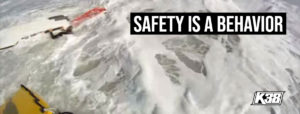
RESPONSIBLE PEOPLE ARE GREATLY ADMIRED
Responsible people aim high, they don’t embrace the lowest denominator, they don’t jump off a cliff, they climb it. They are platinum, not copper. Everyone else is a distraction and a potential problem waiting to burden others.
Responsible people do their homework, they work hard, they are professional and not fragmented, and they comprehend risk and don’t want to hurt anyone. They want to succeed and are not afraid of it. They want to protect their sponsors and those they work with. They care about their family and friends.
They are not lazy, they are meaningful people with purpose. They stand out because there is something good in them fundamentally and they adhere to considerate behaviors so they don’t get sucked down by imposters.
Recreational PWC riders also like jackass attempts at gaining attention on social media. The film dumb stunts, spraying their friends down and perpetuating the stigma we face against their selfish antics. They end up in the news, exposed, and possibly facing a lawsuit if injuries occurred.
It gets real when you cannot go to work and take care of your life, so no better argument exists for this story!
They have very little boating etiquette, they cut off fishing boats, ride too close to other vessels and have no enforcement of navigational rules of the road. Their distance depth perception is awkwardly unsafe. They love to jump boat wakes and often have landed in the back of the boat they chase killing innocent people on board.
They are not schooled in how to operate their PWC efficiently, they complain to the dealership as if they did something wrong, when in fact its they way they take care of their PWC that is the culprit.
Those who disrespect our PWC boating culture are migratory thieves. They do not architect the future for our community, they destroy opportunity. It happens in the recreational PWC community and we see it more often in the surfing community because they love the camera and media attention.
Some of this is due to sponsorships or hopes of, and they too will sell out for silly mishap likes. Mutable problems of wrong that hold progress hostage. Sponsors will sell an athlete out if their mishap video renders millions of views when their amazing surfing video goes unnoticed. They become disposable assets.
These imitators are not the center of the surfing world, they are casting the future potential of dangerous boating behaviors into the lineup. It’s like choosing between good and evil and that is entirely on them. This is an ultimate responsibility of your or their operational safety and everyone in a 300’ foot radius you could impact in 100 different ways, and it needs to be made right.
This is not about short term pleasure or ego, or the primary call of adventure that is so terribly seductive, it’s the protection of the temptation to resist harming others.
POWER IS KNOWLEDGE IS FUNCTION IS THIRST
See people in the lineup? A boat dead head, a fishing boat under tow, a SUP or kiter? Give wide berth, slow down, alter course, resist being you and become a prudent mariner. Burns to read this doesn’t it? It will burn red hot if it’s true and sting like a mo’fucker, because the conscious of those guilty will not deny our flaws.
If the surf community is pissed off, listen to them and heed their advice. Drive away and find another wave, private but be prepared for your safety and those around you.
The wave cannot be blamed. The wave did not cause loss of control of the PWC, you did. You put the PWC there, you made the decision to position it, and you need to be competent enough to manage that choice. Have you even read the Owner’s Manual yet? If not, write to me and I will send you one. Solutions are easy.
Have you considered the audience? Take a close look at a lineup all the way to the sandy shore of the nearshore drift. Do you have a right to take away their opportunity and elevate yours? Can you illustrate what their thoughts and fears may be observing you’re positioning? You need to do this.
You need to be them and they need to be you. If it doesn’t add up you are in the wrong place and have no business being there.
Is it illegal? Then you deserve to lose your boater license, be rolled back to training and having your vessel parked until you correct your safety behaviors, while you pay any necessary fines.
It’s a privilege to operate a boat, don’t blow it because you are impulsive!
THE POINTS WHERE THINGS GO WRONG
• Close proximity to surfers or swimmers
• Speed of PWC
• Reckless negligent operation of a motorized vessel
• Not wearing an approved lifejacket
• Not using the Engine Cut Of Switch properly
• Not maintain the vessel (not seaworthy)
• Operating in unsafe conditions or overloading your vessel
• Not having a tow line that is functional
• Not knowing how to right a capsize Personal Water Craft
• Violation of any Local, State, Federal, Province, Prefecture, Sanctuary, laws, rules or regulations
• Swell, wave height, water depth, shoreline, tidal concerns
• Time of day
• Type of PWC being used-weight displacement, not to be operated in surf over 6.5’
• How many persons on board (POB)
• Directional maneuvering of the PWC
• Coxswain competency training for surf operations
• Coxswain PWC license/boater ID card
• PWC Insurance, registered owner liability
• Required government safety equipment to be carried on board (inspected-minimum carriage)
• Approved, properly sized and fitted lifejacket (PFD) for all persons on board (POB)
HOW MUCH IS YOUR REPUTATION WORTH?
For some people, it’s not even worth the price of a Lifejacket. Their life is as cheap as $75.00 USD. I can get a really nice dinner for that!
But when you need it, you cannot afford it because it’s surfer and lifeguards have this chronic fear of being able to duck dive a wave. It’s a very powerful jet driven boat, it’s not a surfboard, we are not duck diving.
If you have fear that you are going to lose the boat in the surf, there is a reason why you are afraid, and you will lose your boat. That means you have no business being there and don’t know what you are doing with it.
The irony is how big wave surfers cling to these inflatable devices but their PWC partners are afraid to wear a lifejacket…makes no sense at all. Argument is over.
You are a boater first, everything else when you are at the helm is inconsequential in a court of law. How will you present yourself to a judge and jury if called into court, what defense will you be able to present?
How about changing the conversation? Turn it all around, turn up the volume. Start hanging out with competent PWC people who care and know what they are doing, associate yourself with knowledge instead of distractions that do not want you to succeed.
Here is what you can respect, and what you can do to guide your pursuits by discipline that will allow you to achieve measurable success:
1. GPS Tracking device properly charged and tethered to Coxswain
2. Marine VHF radio properly tethered to Lifejacket of Coxswain
3. Water Whistle (leash) on Lifejacket of Coxswain
4. File a Float Plan
5. Never go out alone, use the buddy system
6. Train effectively, don’t burn gas, train with purpose
7. Observe the weather and water reports (lightning is a no-go) while underway
8. Read the Owner’s Manual, know how to do field repairs on the water and prepare your craft for launch
9. Carry proper tools and emergency supplies
10. Go over a safety plan in case things go bad or you end up helping others or need assistance yourself
11. Introduce yourself to the local authorities. Ask them to inspect your boat and give you advice
12. Know the area seasonally and study the local nautical charts, map out your timeframes and distance
13. Start logging your training and vessel maintenance, become a prudent mariner
14. Join this group: https://www.facebook.com/groups/RWCCoxswains/
15. Or this one: https://www.facebook.com/groups/KawasakiJetski/
16. Become the Solution - Get competency evaluated by an accredited course provider
Join something worthy of your life, get on board with a trusted resource, invest properly, stop wasting your time. Get ahead of the costly 'mistake curve'.
You don't have to be the first person, so get over yourself, you can never be the first person if you didn't create it. You have imitated from other people and you owe your mentors credit. That is what helps us check our ego.
I would like to pay homage to my ancestors, my DNA and to Brad Southworth and Virgil Chambers for what they taught me, and Pamela Dillon. These are my teachers. Thank you to Mr. Jacobson and to Kawasaki Motors Corporation for putting this into motion. To all their employees and to the other OEM's who got on board years later.
THE ENDING
I learned from my PWC mistakes when I began in 1979, I know this business and human behavior. I have over 37,000 hours of training alone. I own that and I am still alive because I paid attention. Our shortcomings, our struggles are real.
Strong words shared here because the truth of these matters will awaken a person who needs correction and determine that your/their awareness will no longer permit you/them to remain asleep.
Trust me, that mishap that death or that injury is coming like a freight train on your wrong way track and you won’t be able to stop it, but you can today.
If your friends cared about you and much as I do in this moment, you would not be reading my advice, getting pissed off and angry, wanting to call me some crappy name.
Because your real friends should have squared you away immediately and pointed you in the right direction. But they didn’t.
You can redeem yourself individually when you are no longer overwhelmed with the risk and embrace the power of scale you can incorporate in your operational efficiency. Imagine what responsibility will add to your ability to solve problems that you need.
1. Save Time
2. Save Money
3. Increase efficiency
4. Increase athletic potential
5. Accessory and PWC are not damaged
6. No hospital bills
7. No down time or frustration
8. Cause no harm
You won’t have to avoid the short term at the expense of the long term gain, its happiness in your pursuits that gives you greater purpose and kills off the cynical binge of disaster.
Possibly I am old enough to be your mother or your grandmother, and there is great wisdom in that. I care about your reputation and your life and you better listen because you are not replaceable. Learn from the first or second generation, the source. Respect your elders and predecessors. Listen to them as I do mine.
Somebody has to speak to you about your true value and care enough to say the reasons why you don’t want these mistakes. You cannot afford to screw up your life. The price is too high for you to bear, it’s not a place you want to put yourself in.
This is a reason to become better than what you were doing, offer it to yourself and increase your value. Argue any of these points in this story with evidence science and fact. Because if you are willing to investigate you are trainable. you can learn.
Many people cannot be trained. And I would suggest you not get on a boat with those persons.
Now start caring about yourself properly. And remember; I am you and you are me.
Remember who you are.
_ _ _ _ _ _ _ _ _
Posted: February 27, 2019
Content Creator of Rescue Water Craft and Personal Water Craft boating international education standards: Shawn Alladio is the world’s foremost authority and leading subject matter expert. She cares most about her community and the culture surrounding the safety of event service providers and Rescue Water Craft operators, working hard and dedicated towards protecting their reputation, distributing safety information and continuing to train these amazing individuals to the highest standards of care.
__________
Have any questions? Join the Rescue Water Craft Association
and discover what your community is doing to modernize standards, safety and reduce liability!
Join the Rescue Water Craft Association
Content Creator: Shawn Alladio cares most about her community and the culture surrounding the safety of event service providers and Rescue Water Craft operators, working hard and dedicated towards protecting their reputation, distributing safety information and continuing to train these amazing individuals to the highest standards of care.
Use at your own risk. Please take a qualified Rescue Water Craft training course and maintain proper records and respect all the PWC, RWC, PPE, and gear OEM manufacturer warning labels and cautions.
